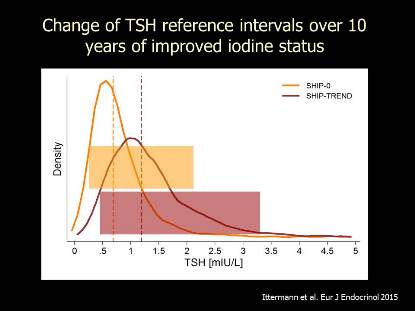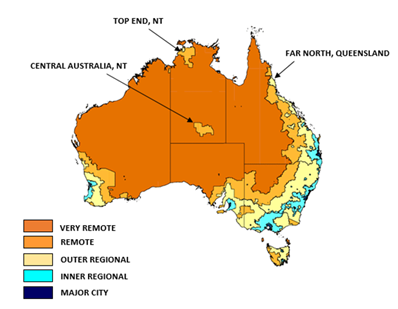Day 2 :
Keynote Forum
Henry Völzke
University Medicine Greifswald, Germany
Keynote: Reference values and therapeutic cut-offs - epidemiologists can help reduce confusion of clinicians
Time : 09:30-10:10

Biography:
Henry Volzke is Professor for Clinical-Epidemiological Research with basic training as Certified Internist. He has been involved in research projects funded by the European Union, the German Research Foundation and numerous other public and private funding bodies and is member of several large national and international research consortia. His broad research interests cover common population-relevant diseases including thyroid and other endocrine disorders, cardiovascular, metabolic and gastrointestinal diseases. In PubMed, he is listed with more than 620 publications in international peer-reviewed journals. He is PI of the Studies of Health in Pomerania and the Northeast German part of the German National Cohort as well as Co-PI of the GANI_MED project and the Greifswald site of the German Centre for Cardiovascular Research. He coordinates the H2020 funded EUthyroid Consortium. He is past President of the German Society for Epidemiology (DGEpi) e.V and the German Representative in the Iodine Global Network
Abstract:
It is a common error in thinking of clinicians to hope that a reference value could help finding the right treatment decision. In general, reference values are nothing else than distribution markers of a clinical test among a healthy reference population, as analysed from cross-sectional studies. The value distribution is highly dependent on factors affecting the population and the selection of the reference population. The question that can be answered by analysing reference intervals is only the question on what is high or low or, more in general, what is usual in a given population. Values outside a reference range indicate that there is a high probability that the patient is not “healthy”, which may require further diagnostic work-up.
Reference values, however, are not sufficient to decide upon treatment initiation. Valid answers to the question on whether high or low values should be treated or not require 1) clinical information on symptoms, co-morbidities and other diagnostic findings and/or 2) longitudinal studies on outcomes related on a given baseline level.
Current epidemiology increasingly comprises large-scale population studies with comprehensive information from medical examinations. These studies offer optimal conditions for reference and cut-off value analyses by 1) results generalizable to the population under investigation, 2) validity in selecting reference populations by not only considering clinical diseases but also subclinical disorders to define health, and 3) high precision by large study populations. Comprehensive statistical methods such as quintile regression allows establishing individual reference values by considering physiological factors influencing test values including, for example, sex, age, body weight and height.

Recent Publications
1. Chaker L, Korevaar TIM, Rizopoulos D, Collet TH, Völzke H, Hofman A, Rodondi N, Cappola AR, Peeters RP, Franco OH. Defining optimal health range for thyroid function based on the risk of cardiovascular disease. J Clin Endocrinol Metab 2017; in press
2. Chaker L, Baumgartner C, den Elzen WP, Collet TH, Ikram MA, Blum MR, Dehghan A, Drechsler C, Luben RN, Portegies ML, Iervasi G, Medici M, Stott DJ, Dullaart RP, Ford I, Bremner A, Newman AB, Wanner C, Sgarbi JA, Dörr M, Longstreth WT Jr, Psaty BM, Ferrucci L, Maciel RM, Westendorp RG, Jukema JW, Ceresini G, Imaizumi M, Hofman A, Bakker SJ, Franklyn JA, Khaw KT, Bauer DC, Walsh JP, Razvi S, Gussekloo J, Völzke H, Franco OH, Cappola AR, Rodondi N, Peeters RP; Thyroid Studies Collaboration. Thyroid function within the reference range and the risk of stroke: an individual participant data analysis. J Clin Endocrinol Metab 2016; 101:4270-82.
3. Ittermann T, Khattak RM, Nauck M, Cordova CM, Völzke H. Shift of the TSH reference range with improved iodine supply in Northeast Germany. Eur J Endocrinol 2015; 172(3):261-7.
4. Mensel B, Quadrat A, Schneider T, Kühn JP, Dörr M, Völzke H, Lieb W, Hegenscheid K, Lorbeer R. MRI-based determination of reference values of thoracic aortic wall thickness in a general population. Eur Radiol. 2014;24:2038-44.
5. Völzke H, Schmidt CO, Baumeister SE, Ittermann T, Fung G, Krafczyk-Korth J, Hoffmann W, Schwab M, Meyer zu Schwabedissen HE, Dörr M, Felix SB, Lieb W, Kroemer HK. Personalized cardiovascular medicine: concepts and methodological considerations. Nat Rev Cardiol. 2013 Jun;10(6):308-16.
Keynote Forum
Carolina M Borges
The College of New Jersey, USA
Keynote: Individual social capital and the use of health services among elderly in a developing context

Biography:
Abstract:
Statement of the Problem: The way we connect to each other can affect our health status and other health related outcomes. Broadly, social capital refers to the characteristics that emerge from social connections among individuals in a given society that can be used for a common goal. Health related outcomes have been linked to lack in Social Capital such as high mortality rates, poor mental health, low well-being, poor oral health, poor maternal health weak adherence to health promotion policies, and obesity prevention.
Methodology & Theoretical Orientation: This cross-sectional study sought to test the association between social capital, health status, and use of health services, among Brazilian non-institutionalized elderly living in an industrialized area. Sample was composed by 2,052 respondents aged 60 or older, living in Sete Lagoas county in 2012 (Jan-Jul). Social Capital (SC) was measured by The World Bank Integrated Questionnaire (SC-IQ) dichotomized in “low Social Capital” and “high Social Capital”. Use of health services (11 variables), health status, community engagement, familiar functionality, and social demographics were assessed.
Findings: Out of total respondents, 68.6% belonged to the group of low social capital. Lack in social capital was associated to poor health status (69.5%), > medical treatment (70.7%). When controlled, Low SC increased chances to medical appointment within 6 months [OR=1.78; 95%IC=1.22-2.60], decreased chances to be assisted by Public Health Family Program [OR=0.77; 95%IC=0.59-0.99], of community engagement [OR=0.12; 95%IC=0.09-0.15], and good familiar functionality [OR=0.56; 95%IC=0.36-0.86].
Conclusion & Significance: Individual Social Capital affected health status and the pattern that elderly used health service in this population.Recent Publications
1. Carolina M Borges, Silvia Spivakovsky. Adjusted protocol for dental extractions in oncology patients taking anti-resorptive drugs may reduce occurrence of medication-related osteonecrosis of the jaw. Evidence-Based Dentistry 2016, 17:14–15.
2. Ana Cristina V Campos, Carolina M Borges, Andréa Maria D Vargas, Viviane Elisangela Gomes, Simone D Lucas and Efigênia F Ferreira. Measuring social capital through multivariate analyses for the IQ-SC. BMC Research Notes 2015, 8:11.
3. Chalub LL, Borges CM, Ferreira RC, Haddad JP, Ferreira EF, Vargas AM. Association between social determinants of health and functional dentition in 35-year-old to 44-year-old Brazilian adults: a population-based analytical study. Community Dental of Oral Epidemiology 2014, Dec; 42(6):503-16.
4. Borges CM, Campos ACV, Vargas AM, Ferreira EF. Tooth loss profile among adults according to social capital, socioeconomic and demographic characteristics. Ciência & Saúde Coletiva 2014, 19(6):1849-1858.
5. CAMPOS, ANA CRISTINA VIANA; Borges CM; LELES, CLÁUDIO RODRIGUES; LUCAS, SIMONE DUTRA; FERREIRA, EFIGÊNIA F. Social capital and quality of life in adolescent apprentices in Brazil: An exploratory study. Health (Irvine), v. 05, p. 973-980, 2013.
Keynote Forum
Flores, R. A
Flores, R. A |National University of Santiago del Estero| Argentina
Keynote: Control and follow up for 7 years and 9 months of patients with arterial hypertension in the Community of the National University of Santiago del Estero, Argentina. Flores, R. A
Time : 10:50-11:30

Biography:
Roberto Antonio Flores has been Graduated from the National University of Tucuman, Argentina as Medical Doctor, with the specialties including Internal Medicine, Social and Community Medicine. He did diploma in Cardiology from the National University of Tucuman and Medical Clinic National Academy of Medicine Argentina. Later on he obtained his post-graduation from National University of Cuyo with subjects Pharmacology & Biology and then started working at The Nurses School, Faculty of Humanities, Social Sciences and Health, National University of Santiago del Estero, Argentina where he has continued his research. Presently he has been working at the at the Regional Hospital Dr. Ramon Carrillo, Santiago del Estero City.
Abstract:
Abstract
Introduction: The intention of this work was to obtain complementary information regarding patients suffering from Hypertension, and to observe as the presence of some risk factors for cardiovascular disease, impacts on the tension figures of said hypertensive patients of the Community of the National University Of Santiago del Estero.
Objectives: General: To control and follow up the hypertensive population and investigate the presence of some risk factors for cardiovascular disease.
Specific:
1. Describe the hypertensive population of the University Community of the National University of Santiago del Estero.
2. Demonstrate how the presence of some risk factors for cardiovascular diseases, such as obesity, sedentary lifestyle, smoking, impact on the tension figures in the hypertensive population of the University Community of the National University of Santiago del Estero.
Development: This is a quantitative, descriptive and cross-sectional study, which began in December 2008, recording blood pressure figures and controlling for risk factors and their modifications in the Primary Care Unit of health. The variables studied were age, sex, obesity, sedentary lifestyle, smoking habits. At the beginning of the study, patients were advised to perform walks of at least 30 minutes daily, to continue with a hyposclic and hypolipid diet.
Outcome: Total visits were 6314.1 times per month during the 7 years and 9 months of the study. There were 6314 controls of blood pressure, and weight, and questioned about smoking and physical activity. Tension figures averaged at the start of the study were 150/90 mm Hg, at the end was 135/80 mm Hg in 40% of hypertensive patients, during the first 5 years, at the end of the study 134/78 mm Hg In 40% of patients.
Depending on the age: 20 - 29: 06, 30-39: 22, 40-49: 07, 50-59: 11, 60-69: 18, 70-79: 01, 80-89: 01, with a total of 66 hypertensive patients, these figures were at the beginning of the study. Sixty patients were terminated, two men and two women retired, two men died.
According to sex: Men: 41, 62.12% of the total population. Women: 25, 37.87% of the total population.
Number of obese: 57, which represents 86.36% of the total sample at the beginning of the study. At the end of 26, they reduced their weight, thanks to the programmed physical activity and the hyposódic and hypolipid diet.
Number of sedentarians: 66, representing 100% of the total sample, at the beginning of the study, at the end of 26 performed scheduled physical activities.
Number of smokers: 18, representing 27.27% of the total sample, at the beginning of the study. They completed 17, 1 died, the 2 who proposed to reduce the amount of cigarettes daily achieved their goal, smoking only 10 of 20 cigarettes a day, and 12 of 40 cigarettes a day.
It was recorded that 01 patient suffers from Cardiometabolic Syndrome. There are 04 patients suffering from type 2 diabetes. One patient suffers from hyperthyroidism. One patient had acute myocardial infarction with posterior stenting and pacemaker placement, 01 suffering from osteoporosis and osteoporosis. Only 40% of hypertensive patients usually follow the treatment.
Conclusions: It was demonstrated that when hypertensive patients perform physical activities and lose weight, it is possible to reduce tension figures.
Smoking is a toxic habit that denotes a great psychic dependence for those who suffer from it, which is why patients were advised of psychological consultations and controls that would help overcome this addiction.
- Epidemiology and Antibiotic Resistance | Infectious Disease | Congenital Heart Disease | Disease control | Etiology
Location: Paris

Chair
Henry Völzke
University Medicine Greifswald, Germany

Co-Chair
Ray M Merrill
Brigham Young University, USA
Session Introduction
Anne Sophie Mariet
Burgundy Franche-Comte University, France
Title: Trends of operating room-based glaucoma procedures in France from 2005 to 2014: a nationwide study

Biography:
Anne-Sophie Mariet is a public health medical doctor and a Ph.D. student in environmental epidemiology and biostatistics. She works in the Biostatistics and Medical Informatics unit of Dijon University Hospital. Her themes of research are the study of the effects of environmental multi-exposure to noise and air pollution on health particularly in the perinatal period, and the utilization of the hospital Medical Information System Program in epidemiology.
Catherine Quantin is the Head of the Biostatistics and Medical Informatics Unit of Dijon Teaching Hospital and a member of the Inserm UMR 1181 Paris team. The Biostatistics and Medical Informatics Unit directed by her, specializes in the statistical analyses of data contained in major medical databases in the field of public health. Her team includes Hospital Practitioners, Analysts, Statisticians and Public Health Researchers. This team is responsible for the collection, coding and statistical analysis of hospital Medical Information System Program (PMSI) data. Its research activities include the development, the comparison and the application of statistical methods and models (notably to identify prognostic factors) to meet the challenges associated with the exploitation of health data. In this context, her team was one of the first to obtain authorization to extract data from the SNIIRAM database (a nationwide centralized administrative database of all health services) for methodological research (pharmaco-epidemiology).
Abstract:
Aim: The aim of this study is to report the trends of operating room-based glaucoma procedures from 2005 to 2014 in France.
Methods: We identified operating room-based glaucoma procedures (trabeculectomies, deep sclerectomies, aqueous shunts and ciliary body destructions) performed in France from 2005 to 2014 by means of billing codes from a national database. Annual rates and incidence of these procedures per 100,000 were analyzed globally and in 3 age groups: 0-14 years, 15-59 years and over 60 years.
Results: The annual rate of trabeculectomies slightly decreased during the study period while the rate for other surgical techniques (deep sclerectomies, aqueous drainage procedures and ciliary body destructions) increased. The rate of glaucoma surgery was 30 procedures per 100,000 inhabitants over the study period (standardized rate on the French population). There were variations over time in the rate of different types of procedures. For example, the annual rate of trabeculectomy decreased slightly during the study period from 15.6 in 2005 to 12.1 procedures per 100,000 inhabitants in 2014. Second, the rate of deep sclerectomies doubled between 2005 and 2006 from 5.3 to 10.4 procedures per 100,000 inhabitants and then declined steadily to reach 7.8 procedures per 100,000 inhabitants in 2014. Finally, the rate of aqueous drainage procedures increased over the period from 0.24 in 2005 to 0.95 procedures per 100,000 inhabitants in 2014 and the rate of ciliary body destructions increased from 1.98 to 3.02 procedures per 100,000 inhabitants during the period.
Conclusion: Trabeculectomy was the most commonly performed operating room-based glaucoma procedure in France from 2005 to 2014. Other modalities such as deep sclerectomies, aqueous drainage procedures and ciliary body destruction gained more acceptance among French ophthalmologists during this ten-year period.
Tea Skaaby
Research Centre for Prevention and Health, Denmark
Title: Investigating the causal effect of smoking on hay fever and asthma: a Mendelian randomization meta-analysis in the carta consortium

Biography:
Tea Skaaby is an experienced Researcher in epidemiological, population-based preventive medicine. Her scientific focus areas are micronutrient deficiencies and other risk factors for chronic diseases incl. cardiovascular disease and cancer. The current study is part of a series of studies intended to investigate whether repeated health examinations with screening of various risk factors in an unselected population can prevent long-term incidence of ischemic heart disease, stroke, diabetes and mortality, etc.
Abstract:
Statement of the Problem Observational studies on smoking and risk of hay fever and asthma have shown inconsistent results. However, observational studies may be biased by confounding and reverse causation. Mendelian randomization uses genetic variants as markers of exposures to examine causal effects.
Methodology & Theoretical Orientation: We examined the causal effect of smoking on hay fever and asthma by using the smoking-associated single nucleotide polymorphism (SNP) rs16969968/rs1051730. We included 231,020 participants from 22 population-based studies.
Findings: Observational analyses showed that current vs never smokers had lower risk of hay fever (odds ratio (OR)=0•68, 95% confidence interval (CI): 0•61, 0•76; p<0•001) and allergic sensitization (OR =0•74, 95% CI: 0•64, 0•86; P<0•001), but similar asthma risk (OR=1•00, 95% CI: 0•91, 1•09; P=0•967). Mendelian randomization analyses in current smokers showed a slightly lower risk of hay fever (OR=0•958, 95% CI: 0•920, 0•998; P=0•041), a lower risk of allergic sensitization (OR=0•92, 95% CI: 0•84, 1•02; P=0•117), but higher risk of asthma (OR=1•06, 95% CI: 1•01, 1•11; p=0•020) per smoking-increasing allele.
Conclusion & Significance: Our results suggest that smoking may be causally related to a higher risk of asthma and a slightly lower risk of hay fever. However, the adverse events associated with smoking limit its clinical significance.
Recent Publications
1. Skaaby T, Jørgensen T, Linneberg A. Effects of invitation to participate in health surveys on the incidence of cardiovascular disease: a randomized general population study. Int J Epidemiol. 2017 Apr 1;46(2):603-611.
2. Skaaby T, Taylor AE, Thuesen BH, Jacobsen RK, Friedrich N, Møllehave LT, Hansen S, Larsen SC, Völker U, Nauck M, Völzke H, Hansen T, Pedersen O, Jørgensen T, Paternoster L, Munafò M, Grarup N, Linneberg A. Estimating the causal effect of body mass index on hay fever, asthma, and lung function using Mendelian randomization. Allergy. 2017 Jul 4 [Epub ahead of print].
3. Skaaby T, Taylor AE, Jacobsen RK, Paternoster L, Thuesen BH, Ahluwalia TS, Larsen SC, Zhou A, Wong A, Gabrielsen ME, Bjørngaard JH, Flexeder C, Männistö S, Hardy R, Kuh D, Barry SJ, Tang Møllehave L, Cerqueira C, Friedrich N, Bonten TN, Noordam R, Mook-Kanamori DO, Taube C, Jessen LE, McConnachie A, Sattar N, Upton MN, McSharry C, Bønnelykke K, Bisgaard H, Schulz H, Strauch K, Meitinger T, Peters A, Grallert H, Nohr EA, Kivimaki M, Kumari M, Völker U, Nauck M, Völzke H, Power C, Hyppönen E, Hansen T, Jørgensen T, Pedersen O, Salomaa V, Grarup N, Langhammer A, Romundstad PR, Skorpen F, Kaprio J, R Munafò M, Linneberg A. Investigating the causal effect of smoking on hay fever and asthma: a Mendelian randomization meta-analysis in the CARTA consortium. Sci Rep. 2017 May 22;7(1):2224.
4. Skaaby T, Husemoen LL, Thuesen BH, Pisinger C, Hannemann A, Jørgensen T, Linneberg A. Longitudinal associations between lifestyle and vitamin D: A general population study with repeated vitamin D measurements. Endocrine. 2016 Feb;51(2):342-50.
5. Skaaby T, Husemoen LL, Thuesen BH, Jeppesen J, Linneberg A. The association of atopy with incidence of ischemic heart disease, stroke, and diabetes. Endocrine. 2015 Mar;48(2):541-50.
Jeonghoon Kim
Seoul Medical Center, South Korea
Title: Factors associated with Secondhand smoke incursion at homes in multiunit housing: Cross sectional study in Seoul, Korea

Biography:
Jeonghoon Kim is working in Department of Environmental Health in Seoul Medical Center in Seoul, South Korea. He is also Ph.D. students in Graduate School of Public Health at Seoul National University and majored in Environmental Health. His study is focused on exposure science. Recently, he is more focused on Second Hand Smoke (SHS) exposure in hospitality venues and multiunit housing.
Abstract:
Second-Hand Smoke (SHS) can seep into living homes from somewhere else in or outside of a building in Multiunit Housing (MUH). The aims of this study were to examine the prevalence of SHS incursion in MUH and to assess relationships between SHS incursion and socio-demographic and home environmental factors in Korea. Population-based samples of 2,600 MUH residents (≥19 years) in Seoul were collected through a web-based panel. The residents completed a questionnaire on socio-demographic factors, smoking status, a frequency of SHS incursion, and home environmental factors. Homes with personal smoke-free rule were determined when residents declared they lived in homes where no one smoked inside. In 2,600 residents, a frequency of SHS incursion was less likely to report residents who were smokers. Non-smoking residents who lived in homes with personal smoke-free rule were included for further analysis (n=1,784). The residents who were experienced for SHS incursion within past 12 months were 74.7%. Multivariable ordinal logistic regression analysis resulted that residents who had more activity time at home, lived with children, supported for the implementation of smoke-free regulation in MUH, lived in homes with smaller home size, lived in homes with natural ventilation with open front doors or open both windows and front door, and lived in homes with higher frequency of natural ventilation were more likely to report SHS incursion at home. Majorities of the non-smoking residents who lived in a home with smoke-free rule were experienced for SHS incursion at home. Activity time at home, living with children, support for the implementation of smoke-free regulation in MUH, home size, methods of natural ventilation, and frequency of natural ventilation was predictors for SHS incursion in MUH. A smoke-free policy in MUH is needed to protect residents from SHS exposure when they are at home.
Recent Publications (minimum 5)
1. Koster B, Brink AL, Clemmensen IH (2013) 'Neighbour smoke'--exposure to secondhand smoke in multiunit dwellings in Denmark in 2010: a cross-sectional study. Tobacco Control. 22(3):190-193.
2. Wilson KM, Torok M, McMillen R, et al (2014). Tobacco smoke incursions in multiunit housing. American Journal of Public Health. 104(8):1445-1453.
3. King BA, Cummings KM, Mahoney MC, Juster HR, Hyland AJ (2012) Multiunit housing residents’ experiences and attitudes toward smoke-free policies. Nicotine & Tobacco Research. 12(6):598-605.
4. Licht AS, King BA, Travers MJ, Rivard C, Hyland AJ (2012) Attitudes, experiences, and acceptance of smoke-free policies among US multiunit housing residents. American Journal of Public Health. 102(10):1868-1871.
5. Kim J, Lee K (2016) Characterization of urinary cotinine in non-smoking residents in smoke-free homes in the Korean National Environmental Health Survey (KoNEHS). BMC Public Health. 16(1):1-8.

Biography:
Anne Sophie Mariet is a Public Health Medical Doctor and a PhD student in Environmental Epidemiology and Biostatistics. She works in the Biostatistics and Medical Informatics unit of Dijon University Hospital. Her themes of research are the study of the effects of environmental multi-exposure to noise and air pollution on health particularly in the perinatal period, and the utilization of the hospital Medical Information System Program in epidemiology.
Abstract:
The objective of this study was to analyze risk factors of preterm birth, hypertensive disorders of pregnancy and small for gestational age in a population of multiple pregnancies in two French urban areas. We included all 249 multiple pregnancies of women who lived in Besancon and in the urban unit of Dijon and delivered in one of the university hospitals of the two cities between 2005 and 2009. A retrospective data collection was conducted in obstetrical records to collect obstetrical history, individual socioeconomic factors, comorbidities during pregnancy, and characteristics of the delivery and newborns. Preterm birth was defined as birth before 36 weeks of gestational age. Small for gestational age was defined as birth weight less than the 10th percentile of birth weight for gestational age in France. Environmental exposures to noise and air pollution (NO2) were modelized at home buildings. A neighborhood socioeconomic index was calculated at the census block groups scale. The associations between potential risk factors and preterm birth, hypertensive disorders of pregnancy and small for gestational age were analyzed by logistic regression models. Preterm birth was observed in 152 pregnancies and hypertensive disorders in 30 pregnancies. Among 506 newborns, 122 were small for gestational age. Preterm birth was associated with infection (p=0.01) and major infant congenital abnormalities (p=0.007). A high pre-pregnancy body mass index was associated with the occurrence of hypertensive disorders during the pregnancy (p=0.002). A small weight for gestational age was less frequent with girls (p=0.04), the absence of pre-existing hypertension (p=0.02), and diabetes (p=0.03). In order to optimize the management of multiple pregnancies, risk factors of adverse pregnancy outcomes should be more precisely identified in this specific population.
Chrissy Bishop
University of Bradford, UK
Title: New insights from reporting congenital anomaly rates using primary care data in a multi-ethnic Born in Bradford (BiB) study

Biography:
Chrissy Bishop worked as an Occupational Therapist for 5 years, during which she developed interests in Public Health and Policy Research. She studied her MSc in Professional Health and Social Care whilst working in the NHS, progressing her interests towards health determinants and epidemiology. She left the NHS to study a second MSc in Epidemiology and Biostatistics at the University of Leeds, during which she was introduced to the Born in Bradford Project. On graduating she was awarded a scholarship to study her PhD with Born in Bradford. Her special interests are pathways through care for children with complex healthcare needs.
Abstract:
Background: In the UK Congenital Anomalies (CA) are a common cause of childhood death and disability; they are the most common cause of infant death for children of Pakistani origin. The CA rate in Bradford is nearly twice the national average. In the present study we linked children with CA in the Born in Bradford study (BiB) to General Practice (GP) data. We have used this routine data to prospectively study late diagnoses of CA and to further describe associations with risk factors for CA.
Methods: We used questionnaire data on 11474 babies from BiB, a prospective birth cohort study of 13857 babies and their families, for which recruitment took place between 2007 and 2011. CA cases were identified by linking cohort babies to GP records, anomalies were classified according to European Surveillance of Congenital Anomalies (EUROCAT) guidelines and coded using ICD-10. Children with one or more CA (n=708), were compared to those without CA (n=10766). We calculated univariate and multivariate risk ratios (RRs) with 95% confidence intervals for various maternal risk factors.
Findings: Use of routinely collected GP data increased the ascertainment of children with CA. At age one, rates for CA were 376 per 10,000 live births but accounted for only 60% of diagnoses. 40% of diagnoses were made after age one, increasing rates to 619 per 10,000 live births to age eight. Consanguinity was found to be a risk factor for anomalies in Pakistani mothers (multivariate RR 1.89, 95% CI 1.51-2.39).
Interpretation: 98% of UK CA registrations occur before age 1 year; our data suggest this is leading to incomplete case ascertainment. National registries should reconsider an age restriction of one for CA case ascertainment. More complete case ascertainment would provide better information for commissioners and allow funding decisions to better reflect clinical requirements.
Tea Skaaby
Research Centre for Prevention and Health, Denmark
Title: Effects of invitation to participate in health surveys on the incidence of cardiovascular disease: a randomised general population study

Biography:
Tea Skaaby is an experienced Researcher in epidemiological, population-based preventive medicine. Her scientific focus areas are micronutrient deficiencies and other risk factors for chronic diseases incl. cardiovascular disease and cancer. The current study is part of a series of studies intended to investigate whether repeated health examinations with screening of various risk factors in an unselected population can prevent long-term incidence of ischemic heart disease, stroke, diabetes and mortality etc.
Abstract:
Statement of the Problem: The effects of health checks on reducing cardiovascular disease morbidity and mortality in the general population have been questioned. There are few randomized studies with long-term follow-up. We used a cohort randomly selected from a general population as a randomized trial to study the effect of repeated general health checks on the 30-year incidence of ischaemic heart disease (IHD), stroke and all-cause mortality.
Methodology & Theoretical Orientation: The study included all persons (n=17 845) aged 30, 40, 50 and 60 years living in 11 municipalities in Copenhagen, the capital of Denmark. An age- and gender-stratified random sample (n=4789) was invited to up to three health checks, from 1982 to 1994 (intervention group). The remaining 12 994 persons were defined as the control group. Complete follow-up on mortality, emigration and fatal and non-fatal IHD and stroke until 31 December 2012 was obtained by linkage to registries.
Findings: There were 3209 and 2190 incident cases of IHD and stroke, respectively, and a total of 6432 deaths during follow-up (mean = 25.2 years). The hazard ratios (HRs) (95% confidence intervals, CIs) for persons in the intervention group versus persons in the control group were as follows: IHD (HR: 0.99, 95% CI: 0.92, 1.07), stroke (HR: 1.14, 95% CI: 1.04, 1.25) and all-cause mortality (HR: 1.03, 95% CI: 0.98, 1.09).

Conclusion & Significance: Repeated general health checks offered to the general population had no beneficial effects on the development of IHD, stroke or all-cause mortality during 30 years of follow-up. An increased incidence of stroke was observed in the group offered health checks.
Isaac M Danat
University of Wolverhampton,UK
Title: Risk factors for abnormal weight in older adults: a community-based cohort study in China
Time : 15:25-15:55

Biography:
Isaac M Danat is a PhD student in Epidemiology and Global Health Research under the supervisor of Dr. Ruoling Chen at the University of Wolverhampton, UK. In 2014 he was awarded Master of Public Health degree (MPH) at University of Wolverhampton after obtaining a MBA at Ahmadu Bello University and a Bachelor of Pharmacy degree at University of Jos, Nigeria. Before entry into the PhD program he worked as a Senior Analyst and a Senior Program Officer, on the Essential Medicine Project, with an international public health NGO “Clinton Health Access Initiative”. His work focuses on obesity research in older population. He was a Speaker at the International Conference for Geriatrics and Gerontological Nursing at London UK, in October 2016. He is a co-author of a paper published in a peer review journal titled “The prevalence and determinants of undetected dementia in the community: A systematic review and a meta-analysis”.
Abstract:
Statement of the Problem: Maintaining normal weight will prevent ill health and prolong life. In the older population, it is also true, but older people have increased risks of obesity, overweight and underweight. Risk factors for these abnormal weights have been less investigated. We set up a cohort study in China to identify the risk factors.
Methods: In 2001-2003 we examined a random sample of 2917 residents aged ≥65 years from Anhui of China, documenting socioeconomic status (SES) and cardiovascular disease risk factors (CVDRFs) and recording blood pressure and physical measurements. In 2007-2009 we re-interviewed 1462 surviving cohort members, measuring body weight and height to calculate Body Mass Index (BMI). We defined participants with BMI≥28 kg/m2 as having obesity, BMI 24-<28 as overweight, BMI 18.5-<24 as normal weight and BMI<18.5 as underweight. We employed a binary logistic regression model to compute age-sex adjusted odds ratios (OR) for risk factors in obesity verse normal weight. ORs were also calculated to identify risk factors in overweight and underweight respectively.
Findings: Of 1462 participants, 1313 had their BMI measured, of which 55.9% had normal weight, 6.5% obesity, 24.4% overweight and 13.3% underweight. There was a significant association of obesity with high SES (e.g. adjusted OR in urban verse rural living was 1.75, 95%CI 1.10-2.79) and CVDRFs (e.g. hypertension 2.55, 1.30-5.01). There was a similar pattern for overweight associated with these risk factors (e.g. hypertension 1.55, 1.05-2.27), while watching TV increased the risk of overweight (1.84, 1.33-2.54). Surprisingly underweight was also related to high SES (e.g. adjusted OR of 1.49, 1.03-2.15 in urban), and inversely associated with baseline depression (0.57, 0.33-0.97) and smoking (0.59, 0.39-0.90).
Conclusion & Significance: Older adults in China have high levels of abnormal weight. Targeting high-risk groups of abnormal weight would likely improve weight management in older adults.
Joelza M A Pires
Federal University of Rio Grande do Sul, Brazil
Title: Adolescents deprived of liberty: subject of rights? Analytical overview under Foundation Care Social-Educational of Rio Grande Do Sul (Brazil) during the period from 2002 to 2014

Biography:
Joelza M. A. Pires, graduated since 1984 in Medicine from Federal University of Bahia (UFBA/1984) and a Master’s Degree in Medical Sciences (Paediatrics) at the Federal University of Rio Grande do Sul (UFRGS/2003). She is completing the doctoral degree in the graduate program in child and adolescent health of UFRGS. She is a specialist in Paediatrics by the Brazilian Society of Paediatrics (SBP). She is a domestic violence expert at the University of Sao Paulo (USP). She is the President of the Foundation of Educational Service of Rio Grande do Sul (FASE/RS) for delinquency juvenile in the management 2011-2015. She has an experience in Social Paediatrics working mainly on the following themes: violence against children and adolescents, sexual abuse and exploitation of children and adolescents, families in situation of vulnerability and social risk, domestic violence, juvenile delinquency, restorative practices, non-violent communication and culture of peace.
Abstract:
Statement of the problem: The teenage offender is the result of a number of factors associated with their vulnerable condition, victim of social exclusion, and although they are not the main perpetrators of violence, relate to her so ambivalent, as victim, as aggressor. There are many risk factors, few responsible for them; In addition to the parental abandonment, father absence, truancy, of street children, drug use and many other violations of human rights. The Fundacao de Atendimento Socioeducativo of Rio Grande do Sul (FASE-RS) is responsible for the implementation of educational measures, applied by Regional Courts of Childhood and Adolescent for offenders teens. The purpose of this study is to describe and analyse the management of FASE-RS, focusing on the fundamental rights of adolescents deprived of liberty and the governmental responsibility of implement, public policies national and State between 2002 to 2014.
Methodology & Theoretical Orientation: Is a qualitative study of organizational-historical exploration using content analysis, interview techniques, analysis of documents and participant observation. As research tool we will use semi-structured interviews with open issues applied in specific social representations: Presidents (managers), judges and prosecutors from childhood.
Findings: The current population is around 1367 teenagers, between 12 and 21 years old, fulfilling educational measures in juvenile justice institution. The State shall ensure, with full protection and absolute priority, for all the teenagers, deprived of liberty, the right to life, health, food, education, leisure, professional training, culture, dignity, respect, freedom, family and community living, besides putting them safe from all forms of negligence, discrimination, exploitation, violence, cruelty and oppression (ECA-1990).
Conclusion & Significance: The Government plans do not include in his re-socialization priorities of adolescents deprived of freedom, in disagreement with the law. The final result will be included before October.
Recent Publications
1. Andrés Villaveces; Lisa A. DeRoo (Dec. 2008) Child delinquency and the prophylaxis of crime in early 20th-century Latin America. Rev Panam Salud Publica vol.24 n.6 Washington.
2. Van der Put and de Ruiter (2016). Child maltreatment victimization by type in relation to criminal recidivism in juvenile offenders. BMC Psychiatry 16:24.
3. Rapp L. (Apr.2016).Delinquent-Victim Youth-Adapting a Trauma-Informed Approach for the Juvenile Justice System. J Evid Inf Soc Work. 25:1-6.
4. Simons I, Mulder E, Rigter H, Breuk R, van der Vaart W, Vermeiren R. (2016 Sep). Family-Centered Care in Justice Institutions: A Mixed Methods Study Protocol. 12; 5(3):e177.
5. Synder H, Sickmund M (2011) International Centre for Prison Studies. University of Essex; Juvenile offenders and victims: 2006 national report. Washington, DC: Office of Juvenile Justice and Delinquency Prevention; 2006
Weiju Zhou
University of Wolverhampton, UK
Title: Socioeconomic deprivation and survival in older adults with angina: a community-based cohort study in China

Biography:
BACKGROUND: Over the past 30 years, China has had an increasing number of people with angina alongside a rapid economic development and population aging. China has also seen an increase in the income gap between rich and poor. The association between socioeconomic deprivation (SED) and survival of older adults with angina is unclear.
METHODS: In 2001-2003, we interviewed 1457 people aged ≥ 60 years who had minimal educational levels in Anhui province, China, having characterised socio-demographics and risk factors for cardiovascular disease and documented doctor-diagnosed angina at baseline. One year after baseline, survivors were re-interviewed to document incident angina. The vital status of all cohort members was followed up over five years. A Cox regression model was used to calculate hazards ratio (HR) of mortality in relation to SED.
RESULTS: 131 participants with angina at baseline or at one-year follow up had an increased mortality (23.7%) compared to those without angina (mortality 14.2%). The multivariate adjusted HR in angina patients living in rural areas versus non-angina participants living in urban areas was 8.45 (95%CI 1.93-37.0). Multivariate adjusted HR among angina patients having a low level of education, occupational class or income versus non-angina participants having high levels was 2.41 (1.38-4.22), 2.15 (1.11-4.17) and 2.88 (1.40-5.92) respectively. Within angina patients, an increased HR was significantly observed for patients living in rural versus urban (4.99, 1.09-22.9), but not in those with other indicators of SED.
CONCLUSIONS: In China, reducing surviving inequality in older adults with angina should be addressed in rural areas.
Abstract:
Weiju Zhou is a PhD student in Epidemiology and Global Health Research under the supervisions of Drs Alex Hopkins and Ruoling Chen (DoS) at the University of Wolverhampton (UoW), UK. On obtaining his first-class BSc from UoW in Jun 2016, Weiju started his PhD study. His research interesting areas cover Coronary Heart Disease and Health Inequality. Weiju examines the data of a large cohort of Chinese older adults to address important research questions from the PhD proposal. He has co-authored a paper published in peer-reviewed journal. Mr Zhou is President of the Wolverhampton Chinese Students and Scholars Association, UK.
Natasha F Morris
Monash University, university in Melbourne, Australia
Title: The indigenous Australian malnutrition project: measuring the burden and nature of malnutrition in regional Australian hospitals

Biography:
Natasha F Morris is a PhD Candidate at Baker Heart and Diabetes Institute and Monash University. Her expertise lies in malnutrition screening and aims to improve malnutrition screening and the nutritional health of adult patients. She is keen on completion of her PhD work involving improving the nutritional health for people with chronic disease through early assessment and nutritional intervention. She is a Lecturer at the University of Melbourne, Department of Nursing, and Coordinates Graduate Certificate in Nursing Practice.
Abstract:
Statement of the Problem: Worldwide, many indigenous populations experience poor health due to their vulnerability to socio-economic disadvantage. Indigenous people are more likely than non-indigenous people to have nutrition related diseases, increased morbidity and decreased life expectancy. Malnutrition in hospital patients is a well-recognized problem; however, malnutrition is frequently under recognized or under estimated in vulnerable patients including indigenous people.
Purpose: The purpose of this study was to measure the burden and nature of malnutrition in adult indigenous Australian inpatients in 3 regional hospitals.
Methodology & Theoretical Orientation: A cross-sectional survey was used to measure malnutrition risk using the Malnutrition Screening Tool and Australian Nutrition Tool; and malnutrition using the Subjective Global Assessment. A Population Based Screening Framework was used with the aim of increasing the awareness and recognition of malnutrition in indigenous Australians and to facilitate early nutrition management.
Findings: 608 indigenous and non-indigenous Australians were enrolled in this study. The prevalence of malnutrition in all patients was 46.1% (95% CI 40.1-52.3%). Higher rates of malnutrition were observed in indigenous Australians residing in Central Australia (56.7%, 95% CI 46.7-66.4%) than in the Top End of Australia (40.7%, 95% CI 31.7-50.1%) and Far North Queensland (36.7%, 95% CI 36.7%, 95% CI 23.4-41.7%). Factors independently associated with malnutrition for Indigenous Australians included Central Australian residence and an increased Charles Comorbidity Index. Anthropometric variables including a BMI <18.5 kg/m2 and smaller mid-upper arm circumference were strong predictors of malnutrition for Indigenous Australians.
Conclusion & Significance: This is the first study to measure the burden and nature of malnutrition in indigenous Australians in an inpatient setting. We observed higher rates of malnutrition than previous malnutrition surveys in Australia and the differing nature of malnutrition that we found highlights the need to developing alternative approaches to malnutrition screening and detection in indigenous Australians.

